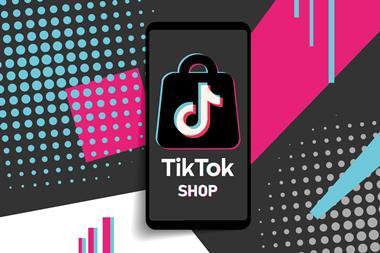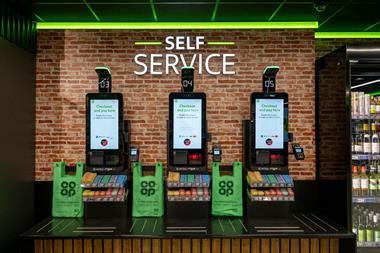Imagine your customers were only ever one click away from you. They might touch the screen of a mobile device, their TV or even a screen on their fridge to make that click. Once they have made that link, their view of your business will be personalised to them. And it won’t just cover your web site – retailers are working on personalised online offerings already – but multiple aspects of the proposition you provide. From products to prices, everything can be personalised – even the terms and conditions of doing business with them.
At the same time, advertising in stores will be personalised, with technology allowing individual customers to be recognised as they enter a store or pass an interactive ad. Consumers will also be able to call on recommendations from their friends and peers wherever they are.
If this all sounds a little like the 2002 blockbuster Minority Report, then don’t be surprised. BT futurologist Ian Neild says that the producers of the hit film visited the MIT Media Lab that BT is involved with when they were making the film. “The blend of science fiction and what you can do in reality will become mixed in,” he says.
So, if that’s the vision, what technology will be used to achieve it? Enabler Wipro European general manager for retail Mike Davies says that technology investment will be broken down into backing new retail propositions that support “fun” and “non-fun” shopping.
For fun shopping, the store will still attract customers as long as they educate, excite and inspire. But retailers will need to build trust relationships with consumers for the provision of staples and other items that are ordered regularly.
Customers will record their preferences for how often they want items delivered and the retailer will keep on delivering until it is told not to. Customers could even provide retailers with a real-time update on what they need, using RFID in the home.
Davies says that trust will be built through retailers fulfilling the customers’ needs to a high degree. So supply chains and supply chain optimisation systems will have to respond to this change.
The increased web transactions do not have to mean the death of physical stores. Rather, new technologies will be adopted by consumers and retailers to make stores more relevant to individual shoppers and make shopping more of an experience.
Technology and the data it holds is often seen as a privacy issue. However, Neild says that, in future, technology will also allow consumers to safeguard their privacy. The nuances of body language that store staff have to try to read could be replaced by a public profile that a mobile device will transmit to let staff know whether you like to be approached when browsing in a store.
Oracle retail industry director Sarah Taylor says: “I hope that customer service becomes better and better. People in stores should be more knowledgeable about products and customers will demand to know where every element of a product comes from.”
She adds that this delivery of information will partly come through a culture change in retail and partly through the use of technology. “We will see a huge reliance on data access for absolute traceability from a selection of products, through to manufacture,” she says. “Consumers will want to understand what type of business they are spending their money with – they will demand absolute transparency.”
Virtual worlds
The experience of shopping in a store and shopping online will also be blurred. Ted Baker head of e-commerce Martin Newman uses the term “total commerce” or “t-commerce” to describe what retail will be like 20 years from now. He forecasts that consumers will move between the real world and virtual worlds seamlessly.
“Everything in e-commerce will be three-dimensional. I can’t imagine how we wouldn’t have advanced to that level by then,” he says. “Consumers will also be able to use any channel to buy and any channel they want to receive goods.”
Fujitsu Services European retail partner Mark Dorgan says: “Tools for creating a photo-realistic web experience are becoming more mature. Instead of drop-down menus and scrolling through thumbnail pictures, you will be able to walk around a virtual store.” He adds that this will be tied in with personalisation, so if you only want to shop for your usual items, a smaller virtual store will be available that only displays the things you normally buy.
Real-time product availability and product description information will be taken to new levels. Newman envisages a scenario where consumers can click on a character in a TV soap opera and immediately be taken to a page where they can buy the outfit that character is wearing.
Many agree that the user interface on mobile phones has held back the adoption of shopping using such technology. After all, the internet has only started to take off in a big way with the roll-out of broadband connections. However, Neild says that the Apple iPhone is planting the idea that consumers can do things easily on a mobile phone. “The next billion people coming onto the internet won’t be using a PC and broadband, they will be using mobile devices. Not being connected to the internet will be the weird thing,” he forecasts.
According to this scenario, technology silos will not only disappear for different channels, but also for different country operations. PCMS managing director Richard Smith says: “Many retailers are now trading in a number of countries, which means working across different languages, currencies and regulatory environments simultaneously. Traditionally, the only way to manage such an operation would have been through a silo approach, with different solutions for each region and no way of collating or integrating data from across the organisation.”
In future, retailers will demand an in-store system for the whole business, with the ability to cope with language, tax and currency variances with a single, common architecture, Smith adds.
A multichannel approach will also create new business models. Dorgan says: “The really successful retailers will provide a multi-sector set of products and services – all the things that need to be at people’s fingertips. One implication is that we will see a rise in the importance of intermediaries – companies that will worry about all the commodity items in your shopping and could source them direct from suppliers rather than retailers.
“If you combine that with the ability to customise and personalise, that is how intermediaries will differentiate themselves. With clothing, you could customise an item and have it delivered to you within a reasonable time frame.”
Retail technology commentator Chris Field believes that manufacturers will side with the consumer, not the retailer, if they see the retailer’s influence decline. Micro-marketing will go mainstream as broadcast media fragments, and although big-brand advertising will survive, it will be supplemented by direct advertising, which can be more intimate.
Dorgan also talks about the “invisible bit of IT in retailing” and says that the trend in the back office for service-oriented architectures (SOA) will continue. “The first generation of SOA will be within each retailer, the second generation will use more remote services,” he explains. “In 20 years from now, retailers will only have front-end IT in-house and everything else will be delivered as a service. They will own very little, but have access to a lot of functionality.”
Taylor agrees that HR, financial applications and management reporting tools could be delivered on demand. She adds that retailers will continue to see part of their IT as providing competitive advantage and SOA will mean that flexible integration becomes pervasive.
SOA will allow retailers to make incremental changes to their systems over shorter periods of time, as retailers get away from larger IT transformation programmes.
And what will have disappeared from retailing 20 years from now?
“Credit cards will have gone and we might even see the death of money,” says Neild. Both Newman and Taylor also agree that biometrics will have evolved to change payment and identity forever.
Neild also envisages that fixed prices will give way to personal pricing for each consumer. He says that consumers may have to pay more for goods if they want to stay anonymous to the retailer, as the value of data becomes monetised.
Davies points out that technology that is heralded as the next big thing can take much longer to penetrate the markets than people anticipate. “I remember being told in 1993 that supertag – or RFID – was the next big thing. It is the next big thing, but only 15 years later.”
However, technology adoption can move much more quickly than people envisage, too. The internet has allowed companies to break the mould and change the rules already. Within the next 20 years, the rules will almost certainly be changed yet again.


























No comments yet